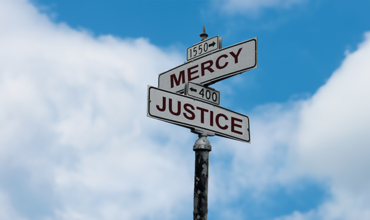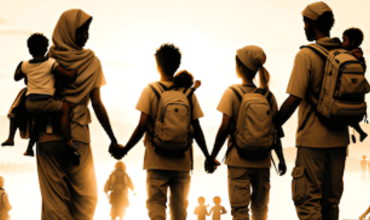News - Solidarity Ministry
-
 October 23, 2025This week, the federal government threatened to surge immigration enforcement operations in the Bay Area. While San Francisco has received a temporary reprieve—thanks to the courage and diplomacy of Mayor Daniel Lurie—men, women, and children around the Bay still remain very much at risk.Read More
October 23, 2025This week, the federal government threatened to surge immigration enforcement operations in the Bay Area. While San Francisco has received a temporary reprieve—thanks to the courage and diplomacy of Mayor Daniel Lurie—men, women, and children around the Bay still remain very much at risk.Read More -
 September 30, 2025Every day when we watch the news, we see stories of war, famine, civil unrest, and global climate change forcing people to leave their homes and seek refuge in other lands. Unfortunately, this is not a new phenomenon. On Sunday, October 5, the Church observes the 111th World Day of Migrants and Refugees, an opportunity to reflect on the connections between hope, migration and mission. It began in 1914 to support the high numbers of people from the rural portion of southern Italy and the island of Sicily who were departing because of economic hardship with little hope of ever improving their lives.Read More
September 30, 2025Every day when we watch the news, we see stories of war, famine, civil unrest, and global climate change forcing people to leave their homes and seek refuge in other lands. Unfortunately, this is not a new phenomenon. On Sunday, October 5, the Church observes the 111th World Day of Migrants and Refugees, an opportunity to reflect on the connections between hope, migration and mission. It began in 1914 to support the high numbers of people from the rural portion of southern Italy and the island of Sicily who were departing because of economic hardship with little hope of ever improving their lives.Read More -
 August 27, 2025“Our response to the arrival of migrating persons can be summarized by four words: welcome, protect, promote and integrate.” - Pope Francis. Today, this response to a migrating person – welcoming, protecting, promoting and integrating them into the United States – also needs to include migrants who may have been here for years or even decades. One way to offer protection is to share information about certain rights and protections that all people in the United States, regardless of immigration status, have under the Constitution. That's where red cards come in. Immigrant Legal Resource Center’s (ILRC) red cards give examples of how people can exercise these rights, for instance when interacting with Immigration and Customs Enforcement (ICE) or other law enforcement agencies.Read More
See More
August 27, 2025“Our response to the arrival of migrating persons can be summarized by four words: welcome, protect, promote and integrate.” - Pope Francis. Today, this response to a migrating person – welcoming, protecting, promoting and integrating them into the United States – also needs to include migrants who may have been here for years or even decades. One way to offer protection is to share information about certain rights and protections that all people in the United States, regardless of immigration status, have under the Constitution. That's where red cards come in. Immigrant Legal Resource Center’s (ILRC) red cards give examples of how people can exercise these rights, for instance when interacting with Immigration and Customs Enforcement (ICE) or other law enforcement agencies.Read More
See More
